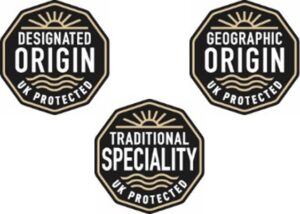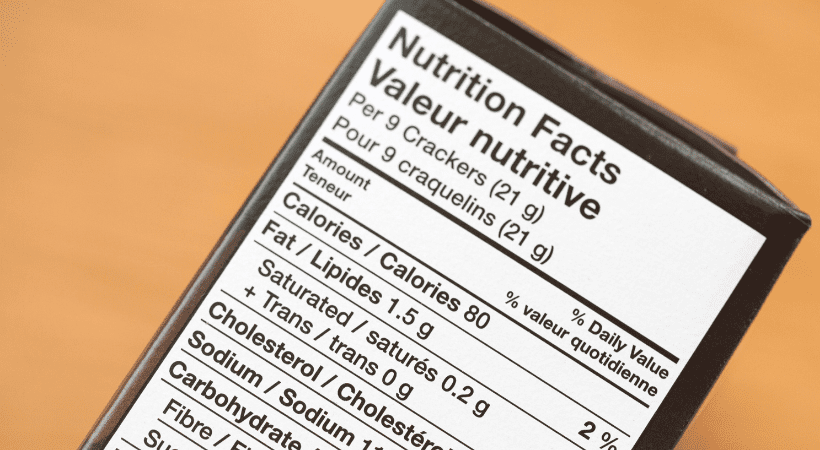How To Prepare Product Labels For BREXIT: 6 Changes To Consider – BREXIT Bite 1
How To Prepare Product Labels For BREXIT: 6 Changes To Consider – BREXIT Bite 1
In the first of our ‘Brexit Bites’ series, Ashbury experts provide you with insights on how to prepare your product labels for Brexit.
We will release a new bite monthly- follow us on LinkedIn to stay informed.
BREXIT – It’s been quite a journey, one that looks set to continue well after the end of the transition period. Even so, from January 1st 2021, the United Kingdom (UK) will no longer be obliged to follow European Union (EU) laws and will become a ‘third country’ (note this excludes Northern Ireland (NI)).
As part of the Withdrawal Act (2018), certain directly applicable EU legislation have been converted and corrected into UK law by way of statutory instruments (SIs), all of which are published on the UK government website. Products marketed within the UK will need to comply with revised legislation, similarly, products marketed in the EU and beyond will face a new set of standards based on the outcome of the global Fair Trade Agreements negotiated.

In preparation for Brexit, what labelling changes must EU and UK food businesses consider?
All products placed on the market before 1 January 2021 can continue to be sold, distributed or transferred in the EU (or UK) without labelling changes. Once on the market, these may be sold until stock is exhausted but can no longer be placed on the market after this date; this includes the transfer of products already on the market where, for example, re-labelling will be required if you transfer products from the UK market to the EU market after transition. For products sold on the GB (England, Scotland, Wales) market, additional adjustment periods have also been issued.
1. Food Business Operator (FBO) Address
Currently, it is mandatory to provide an address of the responsible FBO on pre-packaged product labels; the FBO needs to be established in the EU (as per regulation (EU) No 1169/2011). As the UK will no longer be part of the EU, a UK address will no longer be suitable for UK origin products being sold in EU member states. Likewise, an EU address will not be applicable for EU origin products for sale in the UK market.
The label of pre-packaged foods must include an address for the FBO in the intended market. If the UK based FBO is not established in the EU, the name and address of the EU importer must be indicated and vice versa. This is the main labelling change that will affect all food businesses exporting goods to the EU or UK. It is also a change which has sparked many questions within the industry around the acceptability of addresses. See below for some frequently asked questions regarding this subject:
- Is a PO box address acceptable? No, the address must be for the persons responsible for the labelling and must be contactable for any issues or consumer feedback (i.e. the manufacturer or an importer or distributor). There is still work to be done regarding the definition of ‘established’ in the context of an “Established FBO”, with this will come a better understanding of alternative address options if any.
- Is a Northern Irish (NI) address acceptable as an EU address? The Department for Environment, Food and Rural Affairs (DEFRA) recently advised that, following the end of the transition period, the EU labelling rules in the FIC regulation will continue to apply in NI, thus a NI address will suffice for the EU27 markets. However, please note that this proposal is subject to ongoing discussions on the implementation of the NI protocol.
- What address should be included for exports of products being sold into the EU via different channels. I.e. the same product being sold into more than one retailer via multiple distributors? If several companies are all importing directly from the UK supplier, each would need to be identified by their name and address on the products which they are responsible for, as appropriate.
- Whose responsibility is it to handle any complaints, feedback or recalls? The address provided refers to the party responsible for managing compliance within the marketed country and dealing with any complaints, claims or recalls. Make sure to consider this in your arrangements with any third parties.
Simplified:
Place of sale: GB = Requires address of a UK (including NI) established FBO/distributor(s)
Place of sale: EU or NI = Requires address of a EU or NI established FBO/distributor(s)
Key Dates:
- For goods sold in Great Britain (GB – England, Wales, Scotland), a EU, GB or NI address may continue to be used until 30 September 2022; From 1 October 2022, a UK address must be used.
- For goods sold in the EU, an EU address is required on pack from 1 January, 2021.
2. EU Organic Logo
Unless there is an equivalency agreement (recognising each others standards), from 1 January 2021 organic food or feed may not be sold in the EU labelled as organic. The EU organics logo cannot be used on label for products produced in GB; NI can continue to use the logo for the products they sell into the EU market. In contrast, all EU organic food and feed products will continue to be accepted into the GB market.
For products produced and sold in GB, you can continue to use your approved UK control body logo; you must change the statement of agriculture to ‘UK agriculture’ or ‘UK and non-UK agriculture’.
For continued market access, Ashbury recommend speaking to your UK control body to identify if they are authorised by the EU to certify UK organic produce for export to the EU market after 31 Dec 2020.
Simplified:
Place of sale: UK = Remove EU organics logo, use existing UK control bodies logo, change statement to ‘UK agriculture’ or ‘non-UK agriculture’.
Place of sale: EU = GB producers cannot currently sell products marketed as organic into the EU. NI producers can continue to sell into the EU market using the EU organics logo.
A point to bear in mind- The new EU organic Regulation (Regulation (EU) 2018/848) is due to come into force after the UK’s transitional period ends. If this is not implemented in UK law, it may cause further delays/issues to the export of organic food to the EU market.
3. EU Health and Identification Marks
From 1 Jan 2021 (and not before), the current ‘EC’ health and identification marks will be replaced for UK products of animal origin (POAO). Products placed on the market prior to the end of transition can remain on the market it was placed post-transition; If a product is placed on the GB market before transition end with current marks, it must reach an end-consumer within the UK market; it cannot be moved to the EU market after transition unless it is relabelled accordingly. If placed on the NI market it can reach the end consumer in either the UK or EU markets.
A period of adjustment until September 30 2022 will be available to UK food businesses for POAO placed on the market in Great Britain. It is not applicable to POAO produced in Great Britain and Northern Ireland for placing on the EU or non-EU markets. For these markets products placed after 1 January 2021 will require re-labelling.
New UK health identification marks have been issued and incorporate ‘GB’ and in some cases ‘UK’ in place of the ‘EC’. The Food Standards Agency have issued guidance on the use of the new logos.
4. Country of Origin Labelling (CoOL)
From 1 Jan 2021 food produced in GB and sold in the EU must not be labelled as ‘EU origin’. Food produced and sold in NI can continue to use ‘origin EU’.
Food produced and sold in GB can continue to be labelled with ‘EU origin’ until 30 September, 2022. After this date the label must change to reflect GB origin.
There are nuances for different food categories:
Minced Meat
Sold in NI: Can refer to EU and non-EU where label does not list each country of origin.
Sold in GB: Can refer to EU and non-EU until 30 September 2022; from 1 October, 2022 references to EU must be changed to UK when the label does not list each country of origin. For example, ‘origin EU and non-EU’ must change to ‘origin UK and non-UK’.
Fruit and Vegetables
Sold in NI: Can refer to EU and Non-EU
Sold in GB: References to the EU must be replaced with UK on the label for mixes of UK fruit and vegetables from 1 October 2022. For example, ‘a mix of EU and non-EU origin’ changes to ‘a mix of UK and non-UK origin’. Approved Trader Scheme EU emblem must be changed to GB version from 1 January 2021.
Olive Oil
Sold in NI: Can continue to refer to ‘EU and non-EU’ when no country of origin list is provided.
Sold in GB: From 1 October 2022 you cannot use the term ‘blend of EU and non-EU’. The label must contain one of the following:
- Each country of origin must be listed on the label
- The statement ‘blend of olive oils from more than one country’ (or similar wording)
- The name of the trading bloc to which a regional trade agreement applies, for example ‘blend of olive oils of European Union origin’
Honey Blends
Sold in NI: If you are not labelling with a list of origins and choose alternative wording this statement must reflect the GB is no longer a part of the EU.
- For a honey blend from EU member states = ‘Blend of EU honeys’
- For a blend from countries outside the EU such as GB = ‘Blend of non-EU honeys’
- For a blend from EU member states and non-EU member States such as GB = ‘Blend of EU and non-EU honeys’
These same terms can be used in England and Wales until 30 September 2022 remembering that where an English and French produced honey was once a ‘blend of EU honeys’, this will now be a ‘blend of EU and Non-EU honeys’. From 1 October 2022 you must use ‘blend of honeys from more than one country’ (or similar wording) if you decide not to list each country of origin.
Sold in Scotland: From 1 January 2021, origin labelling may include
- ‘Blend of honeys from more than one country’ (or similar wording)
- Reference to the trading bloc of the countries of origin for example ‘blend of EU honeys’
Beef and Veal
Sold in NI: Can continue to refer to ‘origin non-EU’ if the full individual country information is not available.
Sold in GB: If the animal that beef or veal came from was born, reared or slaughtered outside of the UK, the label must state ‘Origin: non-UK’ from 1 October 2022. Until this date you can continue to use origin ‘non-EU’.
‘Live import into the EC’ must be replaced with ‘beef from a live import into the UK’ where the country of origin of the animal is not known.
Eggs
Sold in NI: Eggs that do not meet EU egg trade regulations must be labelled as ‘Non-EC standard’.
Sold in GB: Eggs that do not meet UK domestic egg trade regulations must be labelled as ‘Non-UK standard’ rather than ‘Non-EC standard’ from 1 October 2022. Until this date either label can be used.
Simplified:
1. Products of GB origin or mixed origin (blended) that were once labelled ‘origin EU’, must be changed to ‘origin non-EU’ when sold in the member-states from 1 January 2021. NI produced products can continue to use ‘origin EU’.
2. Depending on the category and country of sale, different labelling approaches will be required from 1 January 2021 and again on 1 October 2022. These include examples such as replacing instances of ‘EU’ with ‘UK’ or stating the product is made from a ‘blend of [x] from more than one country’ (or similar wording).
5. Geographical Indication (GI) Logos
The authenticity of specific products and traditional specialities that have unique characteristics related to their geographical origin are protected under the EU GI scheme; however, EU protection laws will no longer apply to new UK related GI products.
The UK has set up its own GI schemes which will be implemented from 1 January 2021. All existing UK and Irish registered GI products will remain protected under the new UK schemes as well as the EU schemes.
New registrations from GB producers must secure protection under the UK schemes before applying for the EU schemes; NI do not need to secure protection under the EU schemes before applying to the UK schemes.
Logos

UK produced GI-protected food and drinks, except wines and spirits, must use the relevant new UK logo. The logo use is optional for GI-protected wine or spirits. Producers or retailers registered before 1 January 2021 have until 1 January 2024 to make the changes. The EU logo may continue to be used on label alongside the UK logos going forward for products that are protected under the EU scheme as well.
In NI it is mandatory to use EU logos if the product is registered under the EU GI schemes and optional to use the new UK GI logos if the product is registered under these.
Simplified:
Place of sale: GB = Requires UK GI registration and logo; optional EU registration and use of logo (if protected in the EU).
Place of sale: EU = Requires EU GI registration and logo.
Place of sale: NI = Requires EU GI registration and logo, optional use of UK registration and logo.
Existing UK (including NI) products = Remain protected under current EU law and new UK law.
New GB produced products = Registration must be secured in the UK first, before registration under EU law.
New NI produced products = Do not have to secure EU registration before UK registration for sale in GB.
6. EU Emblem
From 1 January 2021, foods produced in GB (England, Scotland, Wales) must not display the EU emblem unless use has been authorised by the EU.
BREXIT legislation continues to evolve; these are the key things to keep on your radar. Do get in touch with us if you have specific questions related to your situation and we can provide you with tailored, practical advice.
Read our complete guide to UK Food Labelling Regulations for more information about the current rules and what they cover.
Please note the information presented in this document is a summary of key information from cited government resources, this information is subject to change and should only be used as a guideline.
Next reads
The Peanut Diaries: School and Social Occasions
The Peanut Diaries: Navigating Social Events and Celebrations with Food Allergies
The Peanut Diaries: A Parent’s Journey to Uncovering their Child’s Allergy
Redefining Healthy: What the FDA’s New Rules Mean for Food Labels and Nutrition Claims
Keep up to date with our latest insights
Subscribe to our mailing list to stay in touch with the latest news, insights and updates from Ashbury





